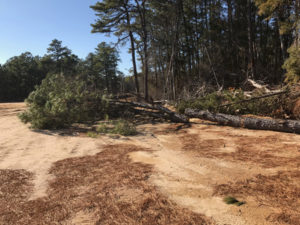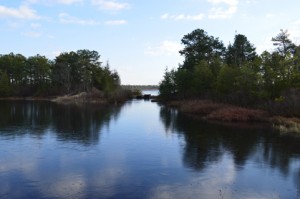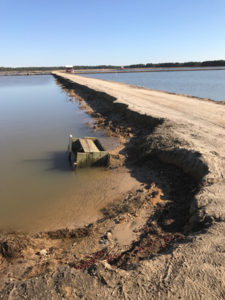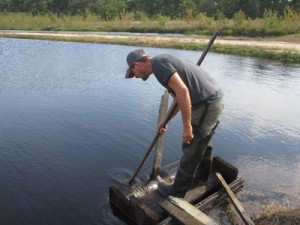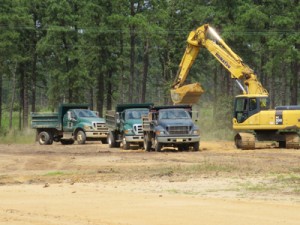While the nor’easter that blew through this area over the weekend had nowhere near the effect that previous storms have, our team nonetheless had some work to do! Mike Haines and Jeremy Fenstermaker kept busy through the weekend and into Monday and Tuesday, as well.
“So far we’ve been flooding with only a small amount of water, since it’s been so dry for so long,” Mike says. “At the same time, though, getting this storm meant we had to be careful because we had a lot more water then we had before, and if you’re not careful you could have water coming over the dams. Matt Giberson saw it getting dangerously high at Young Upper, for example, so he and Matt Stiles worked on lowering the water there. I don’t know if we really prepared, per se, but were just vigilant during the whole time it was raining: riding around during the day seeing if the water was getting too high and adjusting accordingly, letting water into swamps and not into bogs. We also had to monitor Sim Place overnight; wind was blowing straight into gates at Big Reservoir, knocking boards off, and then cedar trees would come into the gates and knock boards off that way. So Jeremy tacked those boards at the top, which we don’t like to do. . .but it was necessary. It requires some extra work and attention but it was good in the end because it topped everything off and now the water is back at the level it was at last winter.
“Now we’re at our targets and have to let water go,” Jeremy says. “We got about 2.5, 3 inches of rain across the farm, but it’s the wind that really messes you up. Water might be at the right level but the wind gets some wave action going and it eats away at the dams, especially where you don’t have any erosion control. At the young bogs, we keep the water high to keep plants from getting pulled out if there’s ice or whatever, but those dams get torn up because erosion control such as grass growing on the side of dams, et cetera, just isn’t there yet.”
“It’s all about being vigilant,” he says. “We didn’t have that much water, but you’re reluctant to let it go in prep for a storm. Once you know what’s happening, then you can start getting rid of it and be extra vigilant to keep it from pushing it into the bog and overrunning dams.” Mike agrees: “You have to always be aware of what’s going on everywhere so you know what can go wrong in every instance.”
“Every bog is a learning experience because it’s situational,” says Jeremy. “Not everything is always set up the same way, so you can learn from it and find better and safer ways to set things up. This one I think we handled pretty well. It’s upsetting to see some of the dams in the shape they’re in but there’s not much you can do about it.” Mike adds: “Yeah, that’ll be a job for the spring when the water comes off.”
So while our team continues to monitor current conditions, we’re also constantly working on ways to establish erosion control on the dams!

